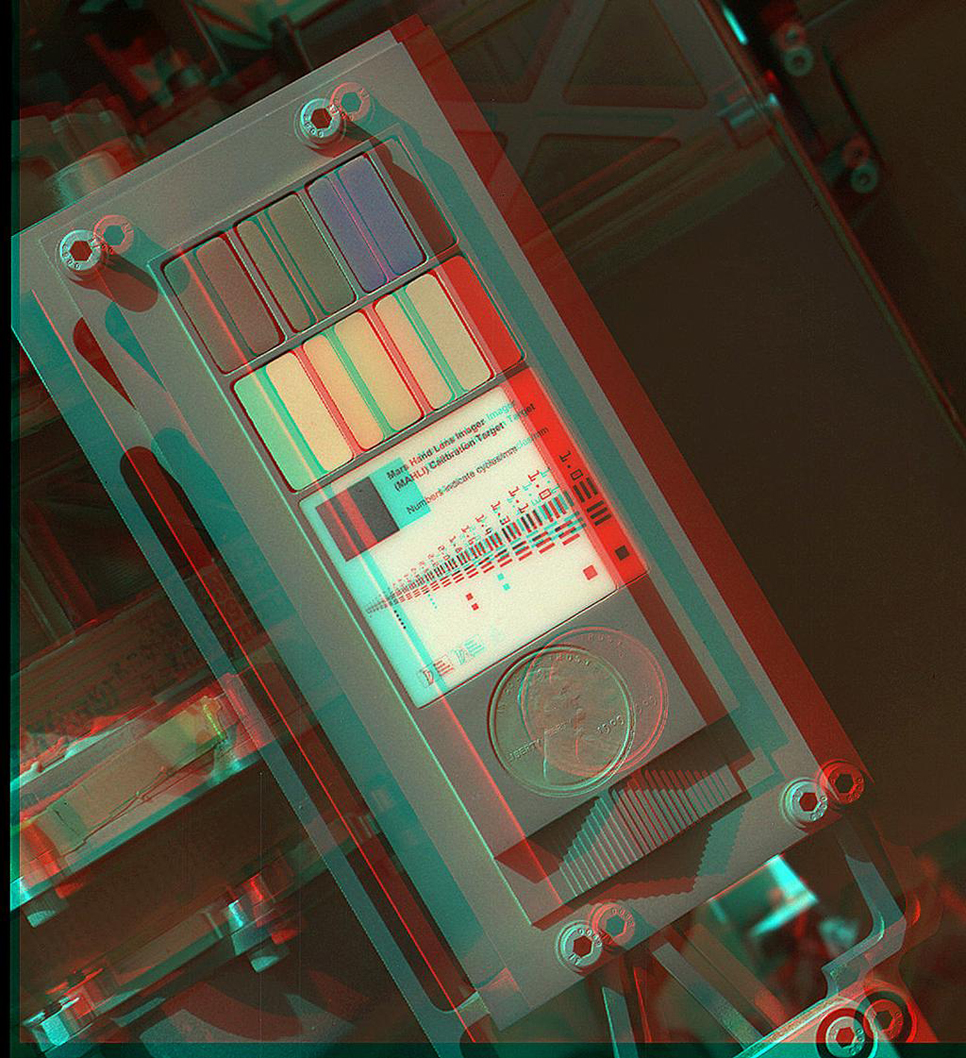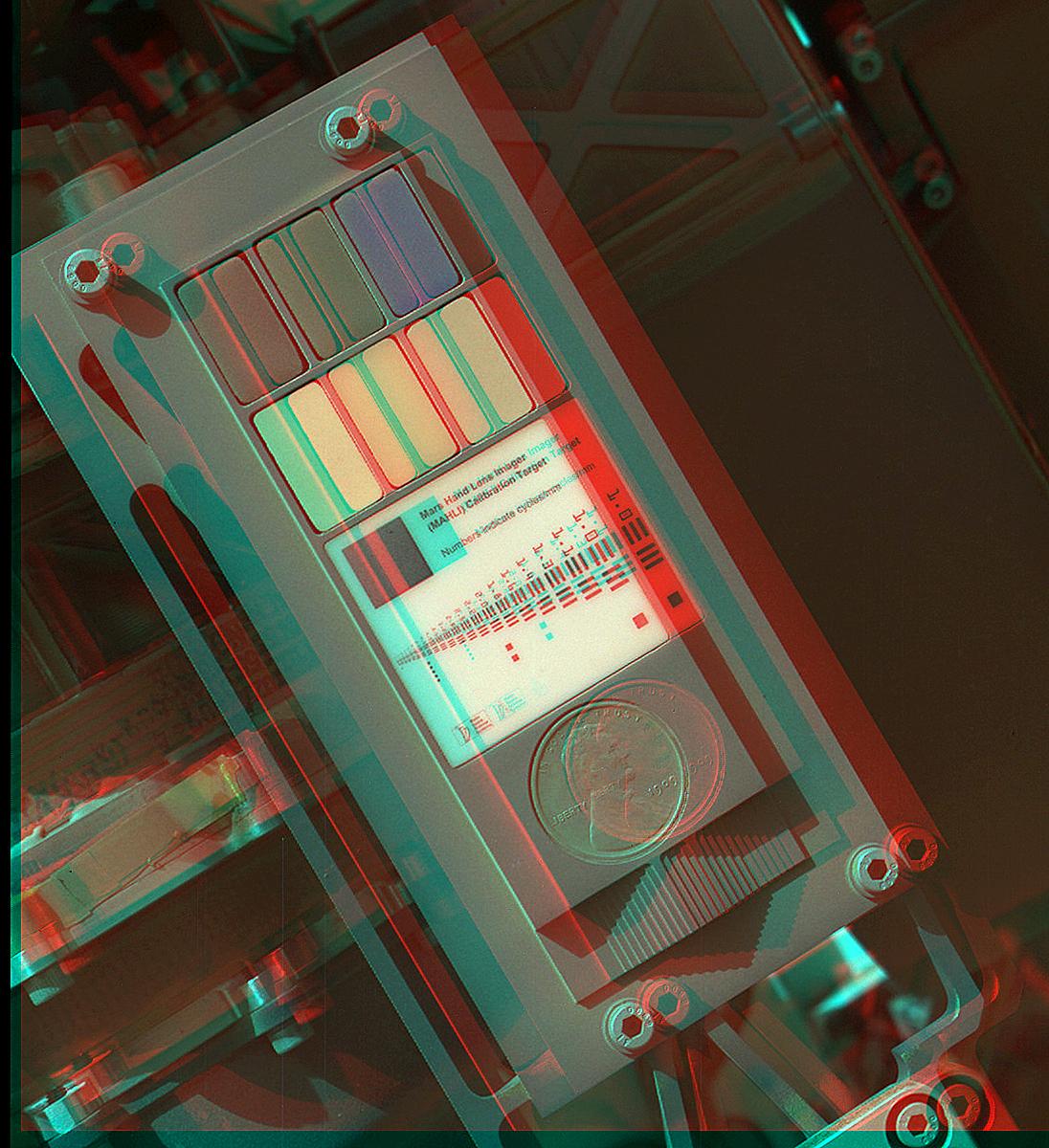3-D View of MAHLI Calibration Target

| Credit | NASA/JPL-Caltech/MSSS |
|---|---|
| Language |
|
This 3-D view of the calibration target for the Mars Hand Lens Imager (MAHLI) aboard NASA's Mars rover Curiosity was assembled from two images taken by that camera during the 34th Martian day, or sol, of Curiosity's work on Mars (Sept. 9, 2012).
The camera is on the turret of tools at the end of Curiosity's robotic arm. Its calibration target is on the rover's robotic arm shoulder azimuth actuator. The Sol 34 imaging by MAHLI was part of a weeklong set of activities for characterizing the movement of the arm in Mars conditions. MAHLI has adjustable focus.
The calibration target for the Mars Hand Lens Imager (MAHLI) instrument includes color references, a metric bar graphic, a 1909 VDB Lincoln penny, and a stair-step pattern for depth calibration. The 0.7-inch (19 millimeter) diameter penny is a nod to geologists' tradition of placing a coin or other object of known scale as a size reference in close-up photographs of rocks, and it gives the public a familiar object for perceiving size easily when it will be viewed by MAHLI on Mars.
This image shows the calibration target has a coating of Martian dust and some adhering grains of fine and very fine sand. This is unsurprising - the target was facing directly toward the plume of dust stirred up by the sky crane's descent engines during the final phase of the August 6, 2012 (EDT) landing.
The main purpose of Curiosity's MAHLI camera is to acquire close-up, high-resolution views of rocks and regolith at the rover's Gale Crater field site. The camera is capable of focusing on any target at distances of about 0.8 inch (2.1 centimeters) to infinity, providing versatility for other uses.
Image source: https://photojournal.jpl.nasa.gov/catalog/PIA15879

